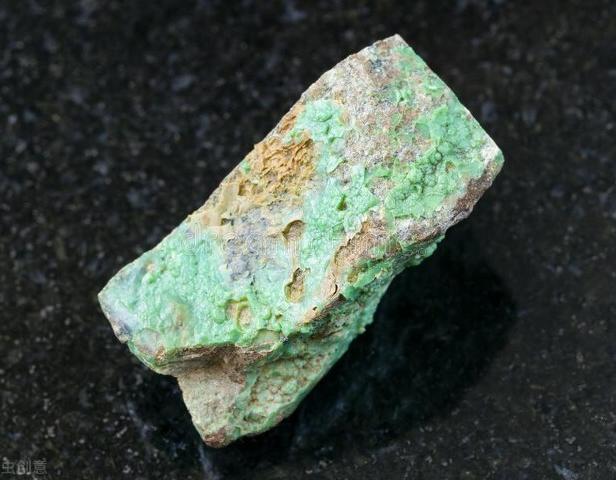With the rapid development of the global economy, the demand and output of nickel as the main raw material for stainless steel have continued to increase. In recent years, the fuel cell, catalyst and electroplating industries where nickel is the main raw material have developed rapidly, which has increased the worldwide demand for nickel. The volume keeps rising. Although the quality of nickel sulfide ore resources is good and the technology is mature, 60% of the global nickel products come from nickel sulfide ore every year. However, due to the long-term mining of nickel sulfide ore, there has been no major breakthrough in the exploration of new resources in the past 20 years, and the retained reserves have declined, and the mining depth of traditional nickel sulfide ore mines has been deepening, making mining more difficult. To this end, the global nickel industry has focused its resource development on laterite nickel ore with abundant reserves. In the 1950s, the extraction of nickel metal from laterite nickel ore only accounted for 10% of the world's nickel, and by 2010 the proportion reached 10%. In 2015, the proportion exceeded 50%, showing a rising trend.
However, it is difficult to enrich laterite nickel ore through traditional beneficiation methods. Most of them adopt four pyrometallurgical processes: nickel matte process, rotary kiln-submerged arc furnace process (RKEF), sintering-blast furnace reduction smelting process, and direct reduction process. To recover nickel, most of these processes have large investment and pollution. In addition, the nickel content of generally imported laterite nickel ore is generally low (the grade is mostly 1% to 3%), and the freight is relatively high; especially in recent years, many people with laterite nickel Mining countries, such as Indonesia, have introduced policies to prohibit the direct export of raw ore, which has hindered the import of many enterprises, and the use of pyrometallurgical technology in resource development is by power supply and huge investment, resulting in the development of nickel resources and the increasingly tight supply and demand of nickel products. .
How to use the hydrometallurgy (also called chemical beneficiation) process to directly produce nickel products in the resource location is the direction that many scientific and technological workers at home and abroad have been working towards. However, the content of various elements of laterite nickel ore in different deposits is different, and the difference is large, and the wet chemical extraction method faces many difficulties. For example, the chemical extraction process of pressurized acid leaching and wet method has been applied in industry, and many laterite nickel ores with high magnesium content are faced with the problem of too many solid and liquid wastes.

At present, in industrial production, the enterprises that adopt the chemical extraction process of pressurized acid leaching method include: the 35,000-ton/year nickel and 3,400-ton/year cobalt production lines constructed by China Metallurgical Group in Papua New Guinea and the 60,000-ton/year cobalt production line constructed in Caofeidian /year high-nickel ternary precursor production line; 50,000 tons/year nickel and 4,000 tons/year cobalt projects jointly constructed by Tsingshan, GEM and other companies in Indonesia; Huayou Cobalt, LG Chemical and other companies jointly plan to build a year in Indonesia A nickel project with a production capacity of 60,000 tons/year. The common problems of these projects are large equipment investment, less comprehensive recovery products, more iron-containing waste residues, and serious environmental pollution. Because most of the processed laterite nickel ores are high-cobalt limonite-type laterite nickel ores, the iron content is generally as high as 35~50%. The dissolved iron ions are converted into hematite precipitation to achieve selective leaching of nickel/cobalt and iron. The leaching rate of nickel and cobalt in laterite nickel ore can reach more than 95%, and the leaching rate of iron is lower than 1~3%. This process requires harsh operating conditions, requires large investment in process equipment, and requires the use of titanium alloy autoclaves; every ton of nickel metal produced produces about 120 tons of acidic iron-containing waste slag, which seriously pollutes the environment.
Kz Mining Design and Research Institute and a university and a scientific research institution jointly designed and researched different types of laterite nickel ore. Dip, have achieved very good results.
Atmospheric acid leaching generally uses strong acids such as sulfuric acid and hydrochloric acid as leaching agents, which have the advantages of simple operation and no need to use an autoclave. The atmospheric pressure acid leaching process has broad application prospects due to the advantages of low leaching temperature and low equipment requirements. Although this process has problems such as low nickel leaching rate when dealing with low-grade limonite-type laterite nickel ores, this process can process a large number of medium-grade weathered rock type and transition layer laterite nickel ores that cannot be efficiently utilized in Indonesia; Compared with the simple pressurized acid leaching process, the pressure + high pressure combined acid leaching process can reduce investment and comprehensively recover iron and magnesium products.
© 2021 Yantai KZ Mining Processing Technology & Equipment Inc.